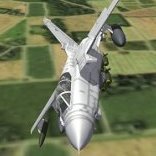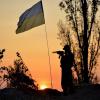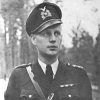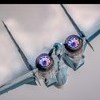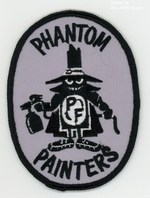Leaderboard
Popular Content
Showing most liked content on 04/03/2022 in Posts
-
6 points
-
5 points
-
4 points
-
3 pointsThere is so much to appreciate and admire about this simulation. I am grateful to the OBD team for their efforts over the years. @Jara4's nifty Pilot Log Editor is one of my favorite things. The ability to write a short mission narrative that highlights the mission events adds to my enjoyment of this franchise.
-
3 points
-
1 point
-
1 pointhttps://www.sas1946.com/main/index.php/topic,68692.msg748964.html#new
-
1 pointThe ukrainian Hind pilots are combat proven. They have learned the job on the hard way in Donbas since 8 years. So they found out, that you must fly very low to avoid Manpads. And very low means 2 meters over ground. Guys who can fly a heli fast at this altitute must have great skills and big balls. And i think the Ukrainians have such pilots. The Mi-24 is for such an attack run a perfect helicopter. It is fast and has an armament which allows to open the fire outside the close air defence of the opponent. I think it is possible, that the Ukrainians had flown this strike. And it was an outstanding job.
-
1 point
-
1 pointThe War Diary of Auguste Besson, Escadrille N.23, part 11. Throughout March, while the battle raged at Verdun and the fate of our nation hung in the balance, we maintained a regular schedule of patrols in our quiet sector of the front. As days and then weeks went by, it became evident that the enemy had weakened his presence there. We had very little hostile activity in the air, and nothing happened on the ground either, with the exception of a few harassment barrages every now and then that were intended to keep up the appearance of a war being fought. One by one, more of our escadrilles were being sent to bolster the defenses of Verdun – but not us! We seemed destined to become forgotten in a sideshow theatre of war, infuriatingly close to the action at Verdun, and yet so disappointingly far from that city of heroes. This was beginning to have a negative impact of the morale of our men, and grumblings about the situation were commonly heard. Alas, there was nothing we could do while the army headquarters saw it fit to keep us where we were. Then, on March 25, Captain de Rochambeau summoned us for a special briefing. New orders had been received from the Fourth Army – the escadrille was to be transferred to the Vadelaincourt aerodrome, a mere 15 km from the front at Verdun, by the end of the month! This news was welcomed by cheers and shouts of ”Vive la France!” So eager were we to do our part in the struggle at Verdun that even the sternest of us could not restrain their emotions. Preparations for departure were made at a feverish pace, and when our column of cars and lorries finally began to lumber forward on its 100 km journey to Vadelaincourt, we were in high spirits, though also feeling sombre about the situation. For if things had been calm, almost peaceful, in our old sector, that would no longer be the case at Verdun. Eventually we reached the road that runs from Bar-le-Duc to Verdun, a distance of about 70 km. This road became better known as ”La Voie Sacrée”, the Sacred Way, during the battle. It was the only road in the region wide and reliable enough to carry all the heavy traffic that was vital to supplying our forces at Verdun. All horse transports and troop movements by foot on the road had been forbidden since the end of February, leaving it open for motor vehicles only. Our column reached Bar-le-Duc via the road from Ligny-en-Barrois, and then began proceeding towards Verdun among countless other cars and lorries. I had never witnessed such an incredible collection of various types of motor vehicles concentrated in one place at the same time. It seemed to me like a glimpse of mankind’s mechanized future, dominated by machines! Traffic was kept in two lines, one going to Verdun and the other back to Bar-le-Duc. Occasionally we passed by vehicles that had suffered mechanical breakdowns. They were simply pushed to the side of the road to wait for repair crews so that the constant flow of men and materiel would not be interrupted by anything. A narrow-gauge railway had also been constructed parallel to the road to further improve the logistics of the troops at Verdun, and there was an additional standard-gauge railway being built in order to reconnect the city to the national railway network. As we proceeded towards Vadelaincourt, we saw large groups of men working along the road, repairing the damage it had suffered from constant heavy traffic. Many of these men were Annamites from our Far Eastern colonies, hired to do work in labour battalions in Europe. Every now and then we also spotted men in boche uniforms with shovels in their hands – prisoners of war, doing the same work as the Annamites. Compared to the Asians, these men looked dirty and unhappy. Night was already falling when we reached Vadelaincourt. It was a small commune about 15 km southwest of Verdun and more or less insignificant before the war. However, the German offensive had suddenly turned the place into a hub of activity. Aerodromes had been rapidly constructed in the area to house all the men and machines that were being sent in increasing numbers to help defend Verdun in the air. In the fading light, we saw big Bessonneau hangars, constructed of timber and canvas for easy transportation, lining the airfield. There was no time to waste, and after stretching our legs for a bit and getting our bearings, we all joined in with the ground crews to help them in making the escadrille operational again as quickly as possible. That night, we were too busy to sleep and took full advantage of the cover of darkness to avoid any potential observation of our actions by the enemy. The front was so close to us that we no longer had the same luxuries as we had had in our previous aerodromes. As dawn approached, we could hear the guns booming in the not-so-far distance. TO BE CONTINUED...
-
1 pointYes, this workaround is required because the author of the LODViewer was to lazy to implement this feature into the tool. Maybe he will find some time (and motivation) in the future .
-
1 point
-
1 pointSome "new" E's I'm working on...... Rebuilt/remapped model, new SUU-23/A gunpod also, not up to Ravenclaw standards but better than stock......for me anyway. No decals on any of these birds.....just because I cant be bothered to make em
-
1 point
-
1 pointView File TODEditor After nearly 6 years since my proof of concept experiments with the TOD files I'm ready to release a first version of the TODEditor (could almost be a nominee for the Duke Nukem Forever Award ). Main Features: Easy editing of TOD files: cut/copy/paste, moving and rotating of objects Import of object models files: *.lod, *.obj or *.3ds Warning: Use at your own risk. The TODEditor is currently in an early beta stage and can contain serious bugs. So, please backup your terrain files before you work with the TODEditor. I have warned you! The program is free for whatever use (commercial or personal). Installation: Extract the content of the zip package to a convenient location. The TODEditor depends on the Microsoft Visual Studio 2019 C++ libraries. If not already installed on the computer (e.g. by other applications) they have to be installed by running vcredist_x64.exe (you can find it in the redist subfolder of this package). Start the program by double click the todeditor.exe. For further information see TODEditor_readme.txt. Mue Submitter mue Submitted 03/01/2022 Category Utilities / Editors
Important Information
By using this site, you agree to our Terms of Use, Privacy Policy, and We have placed cookies on your device to help make this website better. You can adjust your cookie settings, otherwise we'll assume you're okay to continue..

